Author’s Note: “The Alaska Native Health Board (ANHB) is the statewide voice on Alaska Native health issues. Active for over 40 years as an advocacy organization for the health needs and concerns of all Alaska Native people, ANHB continues to emphasize the importance of self-determination in healthcare services and encourages wellness and healthy ways of life in Native communities through policy change.” ANHB Website
In August 1990, I began my Master of Public Health (MPH) graduate studies at the School of Public Health, University of Hawai’i, USA. The following summer, I headed off to Alaska for my student field research project with the ANHB to study and produce an analysis of issues, policies and programs affecting Alaska Native health. The document served as the initial briefing paper for a joint Federal and State review of the geo-political, economic, environmental, cultural, psycho-social and other critical issues affecting Alaska Natives.
Alaska
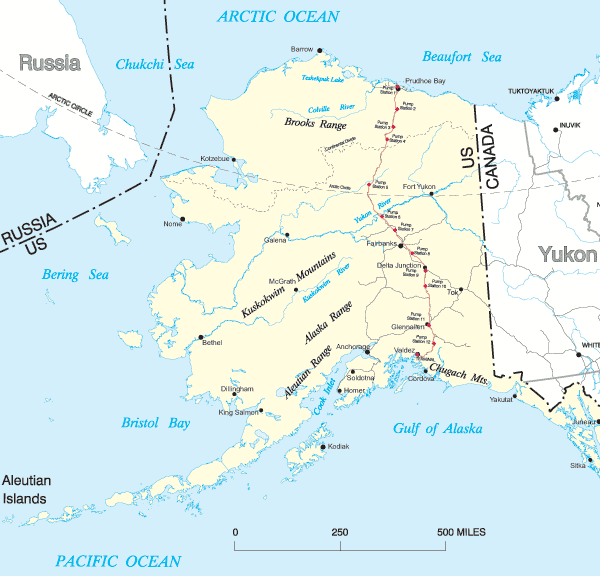
It was time to tug on the muck-lucks, smear some whale blubber on my chin and head for the Klondike! Based in Anchorage for my Master of Public Health (MPH) degree summer field project with the Alaska Native Health Board, I traveled by road, sea, and air — including two-seater light aircraft with bush pilots — to Native communities throughout the state. I met with tribal council members, visited village health clinics, and interviewed local health workers and their clients to gain a better understanding the impact of public policies, programs and other critical issues affecting Alaska Native health.
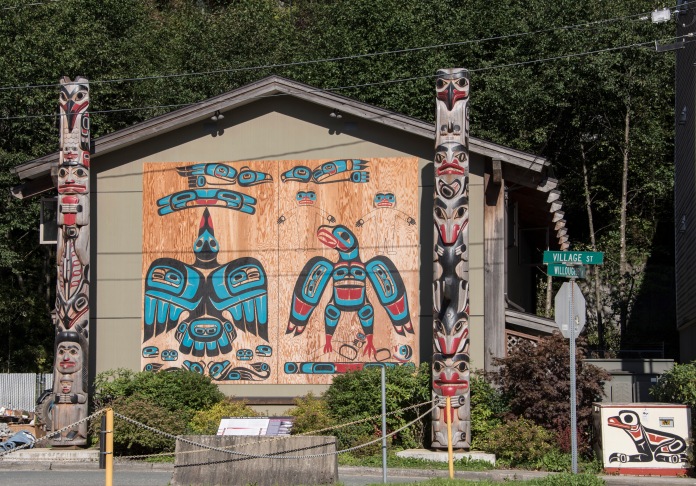
Anchorage is a modern city with big, broad streets, some busy highways, but with a distinctive, wide open frontier ‘cow town’ feeling. The local bars are dark, windowless holes underground with billiard tables and sawdust floors — an efficient escape for anyone wishing to detach fully from the world. Alcohol abuse is a devastating problem in Alaska and it was depressing to see this in an otherwise healthy environment.
Neatly paved trails wind through the well-planned, eco-friendly city, and offer cyclists or skiers — depending on the season — a pleasant and practical alternative to the main motorways. Breathing in the rich, moist, cool and invigorating air, I enjoyed daily bike rides through dense forest along Cook Inlet, named for the famous explorer Captain James Cook. Sharing the bike trail with an occasional moose grazing in the late afternoon sun dazzling across the water, the world was alive and fresh with lush, green growth everywhere.
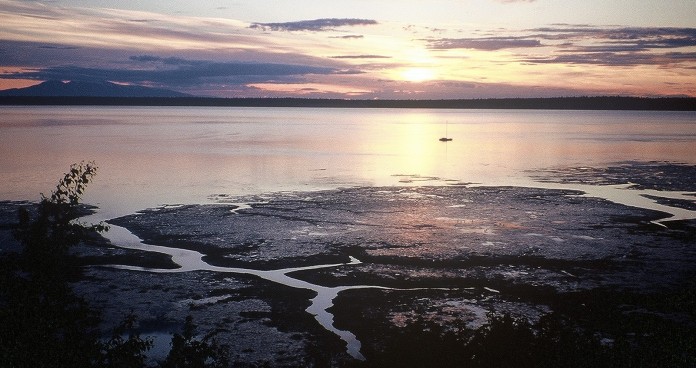
Beautiful when the sun is out, but cold and damp in the rain, with the blustery north wind whipping across the grassy sea marshes at low tide. Long summer days — sunglasses on at 10 PM. The sun still high and glinting off the water with spectacular sunsets over the snow-capped Chagrach Mountain Range – splendid in the clear, fresh evergreen-scented forest.
June was a bit nippy for this island boy, 45-55 degrees F. At 60 degrees, painfully-white sunbathers stretched out on a muddy beach were hopeful in the midday sun. But by mid-August it was snowing and I was ready to get back to Hawai’i’s tropical sea breezes.
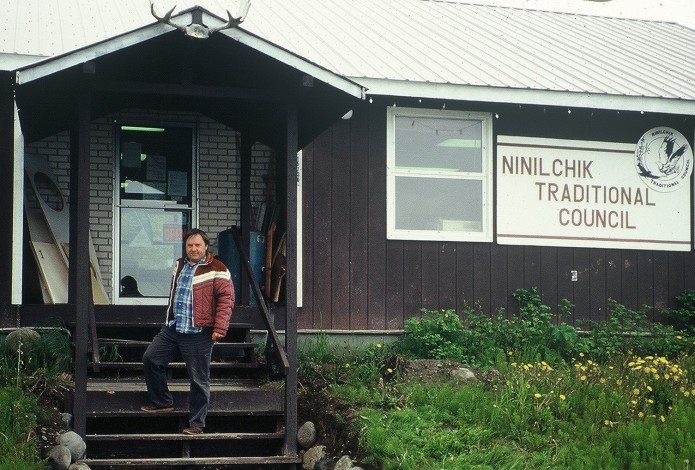
Weekends on the Kenai Peninsula with my friend Bill were refreshing getaways from work and the city. Half Athabaskan Indian and half Russian, Bill’s mixed heritage is typical of many Alaska Natives. Bill worked with the Indian Health Service in Anchorage and was also doing his MPH at the University of Hawai’i School of Public Health. His cabin, which he had built himself, was one of the few buildings in his home village of Ninilchik.
The only other building in sight was a large, simple structure with a smoky all-night bar and country music dance hall on one side, and an 24/7 cafe/diner on the other. Separated by the bathroom, convenient transfers could be made from one venue to the other and back again, depending on the time of day or night.
So, it was exciting times in center-town Ninilchik Alaska, with mere hours between late night beer drinking with the sleepy country and western band and late morning coffee and breakfast in the attached diner. A one-stop, all-purpose gathering spot for local residents.
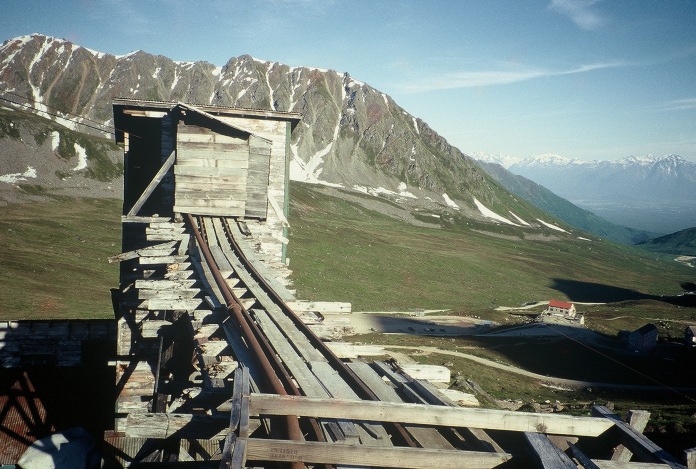
Driving south from Anchorage past Portage Glacier, the town of Homer, also known as the “Halibut Fishing Capital of the World” was a total zoo with all the RVs, ‘shoestring’ budget campers and fishermen lined up elbow-to-elbow along the Kenai River.
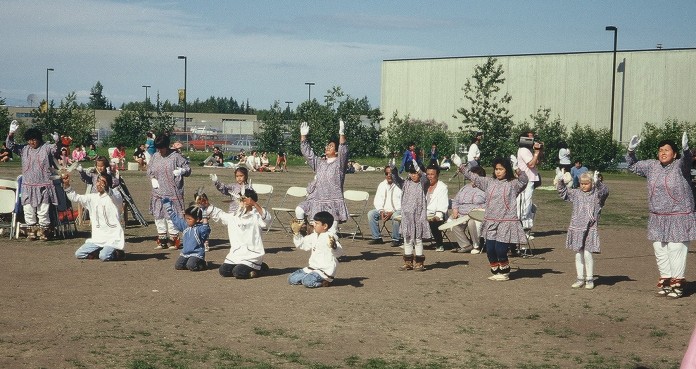
Bill took me to his family reunion and to several other Native potlatches – gift-giving feasts organized by indigenous peoples of the Pacific Northwest Coast of Canada and the USA. At these potlaches we enjoyed tons of tasty baked and smoked salmon, halibut, and seal meat, served up amid the splendid panorama of snow-peaked mountains with rivers rushing in spring run-off, and volcanoes rising across the inlet.
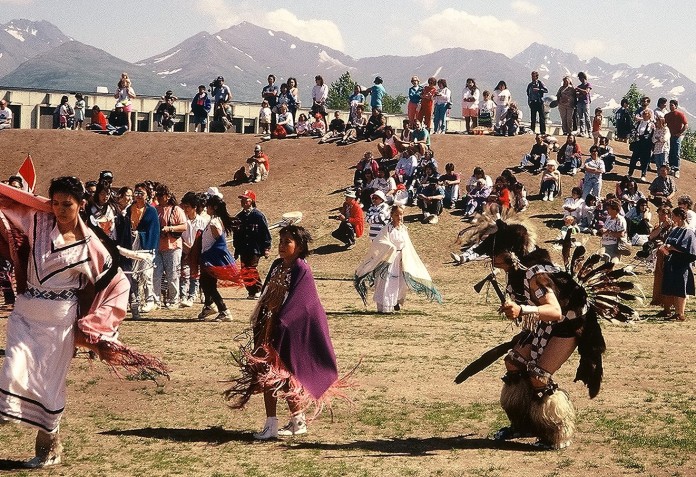
Colorful Native dancers moved to the mystical beat of huge drums at the annual ‘Spirit Days’ festival in Anchorage, which brings together Native tribal groups in traditional costumes from throughout Alaska and the ‘Lower 48’ States.
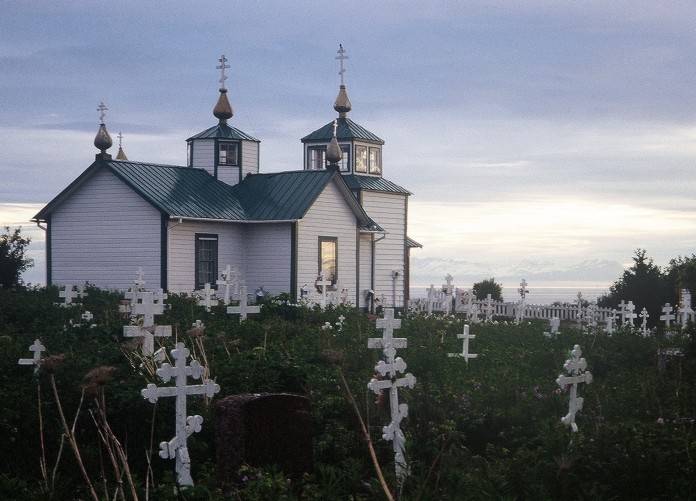
With the rain coming down, oldies playing on the radio, I was happy as a clam in my cozy rooftop apartment overlooking Cook Inlet. Away from academia, I was thoroughly enjoying my research project on ‘real world’ contemporary health and development issues, in a cross-cultural setting and all on my own time schedule. My only worry was that I might become too engrossed in it all and miss out on enjoying this beautiful place.

Fortunately, I am totally addicted to swimming. So my daily bike rides along the coastal trail to the University of Alaska pool were not to be missed. It was simply magical pedaling along the coast through the pine-scented forest with the late afternoon sun dazzling across the water — draining the new green covering the mudflats at low tide.
But the real fun began when I started my field work in Native communities throughout the state – travelling across vast empty stretches of land and sea to tiny, remote and often stunningly beautiful locations to meet and interview local health staff and community members for my research project.

Stay tuned for ‘Back to School: Alaska (Part Two)’, coming soon!
You can read more about Jim’s backstory, here and here.

